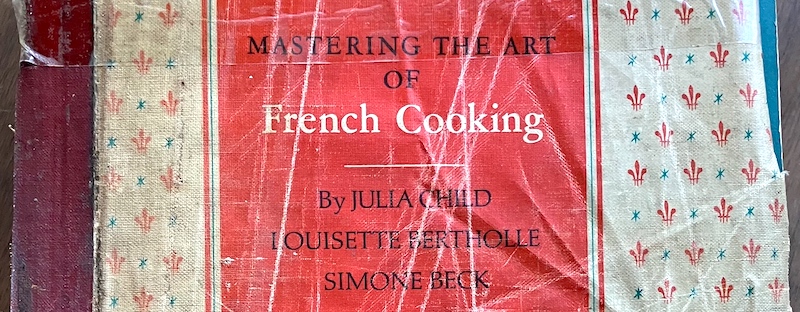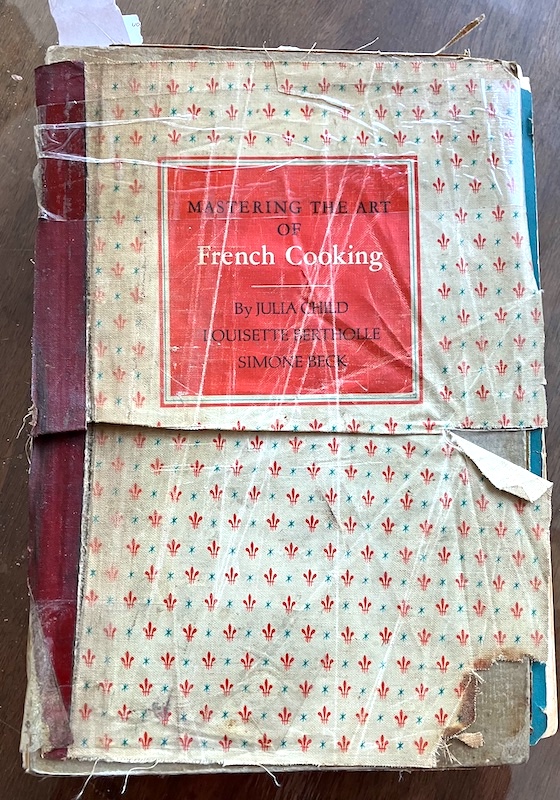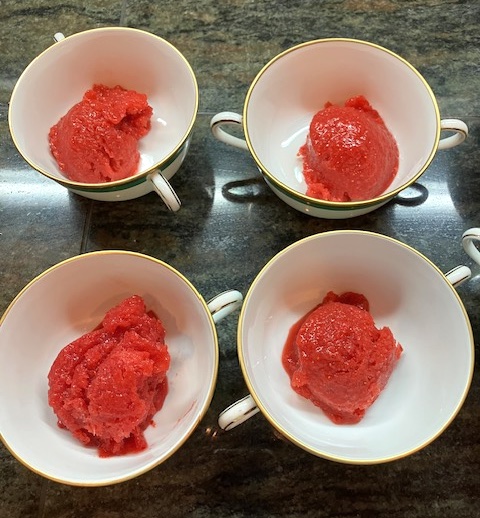
Camp Stories: Best Hacks for Camping with Pets
In the nearly half century that Dave and I have been camping together—first with ancient metal-frame backpacks strapped to our backs and then, as our spines and constitutions gradually weakened, with cast iron and glassware packed with a queen-sized blowup mattress and a big tent that Dave, at 6'4", can stand up in—we've picked up a few tips and tricks to pass along when traveling with pets.

During those decades we've traveled in various sizes of vehicles, starting with old Volvos (both 240 series sedans and wagons, for the cognoscenti) to a Mini Clubman dubbed the "clown car" for the amount we could pack into it, to our current Subaru Forester. The sizes of our dogs went from a 72-pound Husky named Nikki to the pair of Cardigan Corgis we are currently herded by. And yes, we are now that old couple who, in our wildest dreams, can't imagine road tripping "sans chiens," that in our youthful sophistication we might have rolled our eyes at and whispered, "How cute is that…but we'll never be those people."
Ha!
Getting There
For car trips I'm not suggesting you go the route of my aunt and uncle, who erected a platform fastened between them in the front seat of their large 60s sedan so their Dachsund could look out the front windshield. But we have adopted a water-resistant sling for the back seats that both preserves the integrity and the cleanliness of the seat fabric and also keeps the dogs from tumbling into the footwells if we need to brake suddenly. And I'd advise lining the bottom of the sling with an old bath towel if your furry child has a tendency to get carsick just as you're within spitting distance of your destination. Sigh.

Campsite
At the campsite, I've already discussed erecting a zipline to allow the dogs some freedom of movement, and we've found it helpful to have a plastic-backed picnic blanket underneath it for them to lay on while we're attending to camp duties (i.e. cocktails, reading, etc.). It also helps keep them just a bit freer of detritus.
Of course you'll take dog bowls for food and water, but just filling the water bowl with enough for a couple of drinks will save you from having to dump it out innumerable times during the day due to the buildup of needles, dirt and critters that inevitably drop into it.
As for feeding, if your dogs eat kibble you're golden, but since we feed raw food it's a bit more complicated, since it has to be kept quite cold. I usually thaw enough before leaving to last a couple of days, then freeze whatever we'll need for the trip and use it as additional "ice" in the ice chest. It'll thaw gradually, but I keep any leaks contained (and separated from the other food) by putting the containers in large ziplock plastic bags at one end of the cooler next to the drain, then place ice bags next to them. Other items like milk or mayonnaise can then be put on the other side of the ice bags, giving more separation to avoid possible cross-contamination.

If your dogs insist on hanging out with you around the campfire, Dave designed an ingenious way to tie them to your camp chairs by bringing the hand loop at the end of the leash up and underneath the arm of the chair, then bringing the loop up and around the front of the arm. It works with our 33-pound Corgis if you're sitting in the chair, but they have been known to drag an empty chair across the site to chase a chipmunk. So adjust that method as needed.
Elderly Pets
At this point I have to address traveling with an elderly, occasionally incontinent pet, so if you're not yet in that place, you can skip to the end.
Kitty, a sweetie pie at 15 1/2 years old, is in diapers when inside and needs her crate lined with training pads (we call them "pee pads"). Camping is a little easier because we could dispense with diapers since she was outside anyway, but the tent situation can be dicey—no one wants to spend three days in a urine-soaked tent, right? So on our last trip we took her crate and crate pad, a dozen pee pads and diapers and set it all up in our very large tent (see first graph). It actually worked really well, so we'll do the same thing on our next trip.
Another note about traveling with elderly pets—we've noticed that lately Kitty has difficulty adjusting to new spaces, whether it's a hotel room or a campground. It may be because her sight has dimmed over the years or she's experiencing the onset of dementia, but we try to keep her close for the first day or so and let her familiarize herself with the new environment. (So far it hasn't been a problem.)
The key is knowing that you're going to have to adjust your expectations to keep your pet comfortable and safe, whether that's finding dog-friendly vacation spots or hikes that you all can enjoy. But it's worth any trouble to see that grin on your buddy's face after a swim in a rushing creek or a long romp on the beach.
Find more camping hacks and gear suggestions. And get my suggestions for some of the best campgrounds around the Northwest.










 Over time, as cooking shows proliferated and a quick internet search delivered any recipe, cookbooks in general have become passé. While Mastering the Art of French Cooking has sold over 1.5 million copies, it's hard to imagine most people taking the time to read and study it now. But Julia Child herself continues to play a large part—through television shows and series—in American popular culture.
Over time, as cooking shows proliferated and a quick internet search delivered any recipe, cookbooks in general have become passé. While Mastering the Art of French Cooking has sold over 1.5 million copies, it's hard to imagine most people taking the time to read and study it now. But Julia Child herself continues to play a large part—through television shows and series—in American popular culture.
 It led to a complete rethinking of our very profligate and, frankly, thoughtless use of dairy in everything from our morning toast to creamy casseroles to buttery pastries and desserts. Store shelves today proudly proclaim their products to be "dairy free" and "vegan," with lactose-free butter, milk and cheeses in stock almost everywhere. Even restaurant menus now offer dairy-free options and label entrées "DF" or "V," but thirty years ago it meant switching to margarine and tofu-based simulacra of our beloved dairy products.
It led to a complete rethinking of our very profligate and, frankly, thoughtless use of dairy in everything from our morning toast to creamy casseroles to buttery pastries and desserts. Store shelves today proudly proclaim their products to be "dairy free" and "vegan," with lactose-free butter, milk and cheeses in stock almost everywhere. Even restaurant menus now offer dairy-free options and label entrées "DF" or "V," but thirty years ago it meant switching to margarine and tofu-based simulacra of our beloved dairy products. But the upsides were legion, as well. One of the big reasons for Dave's
But the upsides were legion, as well. One of the big reasons for Dave's 


 Parr: This book grew out of my involvement in the cheese world. While writing my previous two books (and the blog before that) I spent a lot of time hanging around cheesemakers and visiting farms around the Pacific Northwest.
Parr: This book grew out of my involvement in the cheese world. While writing my previous two books (and the blog before that) I spent a lot of time hanging around cheesemakers and visiting farms around the Pacific Northwest.

 Plus, if you make it in the summer and get too warm standing in front of the stove, you are allowed a glass (or more, depending on how quickly you drain it) of a chilled white or rosé.
Plus, if you make it in the summer and get too warm standing in front of the stove, you are allowed a glass (or more, depending on how quickly you drain it) of a chilled white or rosé.




 Above is his second harvest of fava beans. He shared some of the first picking, which I added to a salad under a gorgeous filet of grilled salmon, then he asked if I could help out with this second massive haul. My answer was something akin to "Hell yes!" and I rushed over with bag in hand, coming home with at least five pounds of pods.
Above is his second harvest of fava beans. He shared some of the first picking, which I added to a salad under a gorgeous filet of grilled salmon, then he asked if I could help out with this second massive haul. My answer was something akin to "Hell yes!" and I rushed over with bag in hand, coming home with at least five pounds of pods.

